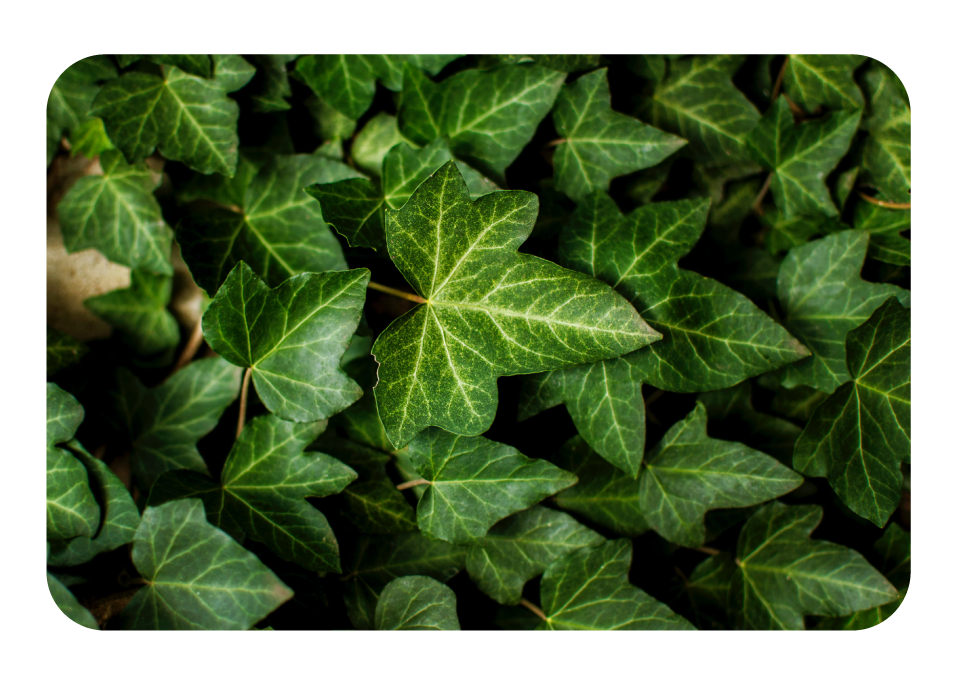English Ivy
(Hedera helix L.)
INVASIVE
English Ivy originated in Europe, Western Asia, and Northern Africa and was introduced by European colonists around 1727. However, English Ivy has a darker side with aggressive invasive behavior threatening forested and open areas. Even though ivy is a known danger to landscapes, natural ecosystems, and other areas, it is still marketed and sold in the United States as an ornamental plant. Government and private entities spend vast resources to manage the ivy infestations on private and public lands.
English Ivy has clinging vines that climb tree trunks until they envelop branches and twigs, blocking sunlight for needed photosynthesis to the tree foliage. A tree with ivy infestation exhibits several years of slow decline before eventually dying. The weight added to the tree from the ivy vines makes it susceptible to breaking and blowing over during storms. In addition, English Ivy harbors harmful plant pathogens that affect many ornamental and native trees, like maples, oaks, and elms.
The English Ivy leaves and berries are toxic if ingested and can cause several symptoms, including diarrhea, breathing difficulties, fever, muscular weakness, lack of coordination, and even coma.
If you have an ivy infestation, you can pull the individual vines by hand if the soil is moist. If there is a ground covering of ivy, uproot vines with a heavy rake and pile vines to rot, which only takes a few days. Cut vines a few feet above the ground and apply systemic herbicide to the lower cut portions for vines climbing up trees. However, the best control is not to plant English Ivy.
Reference:
English Ivy. (2021). Weeds Gone Wild. Retrieved from:
https://www.invasive.org/alien/pubs/midatlantic/hehe.htm




